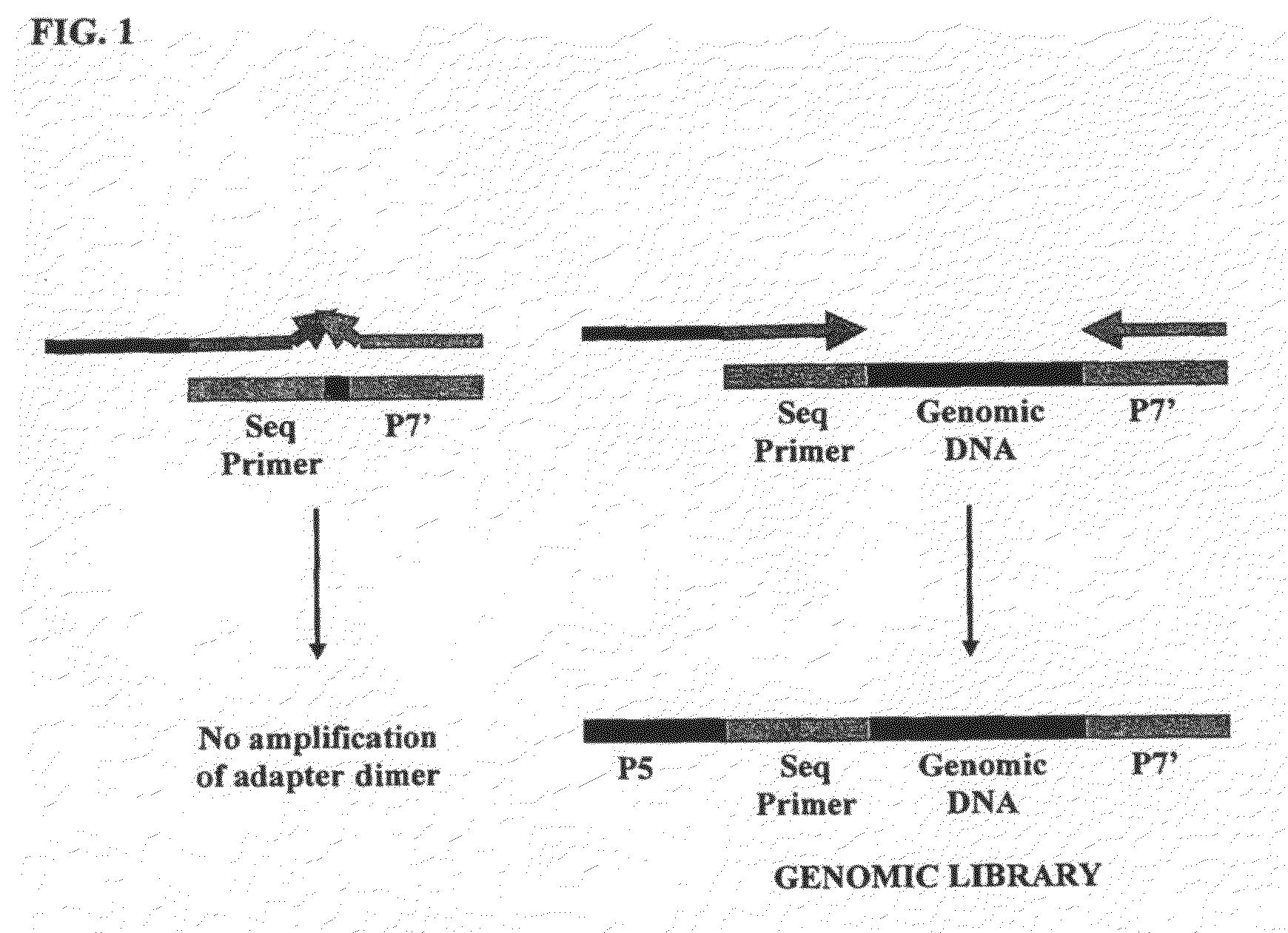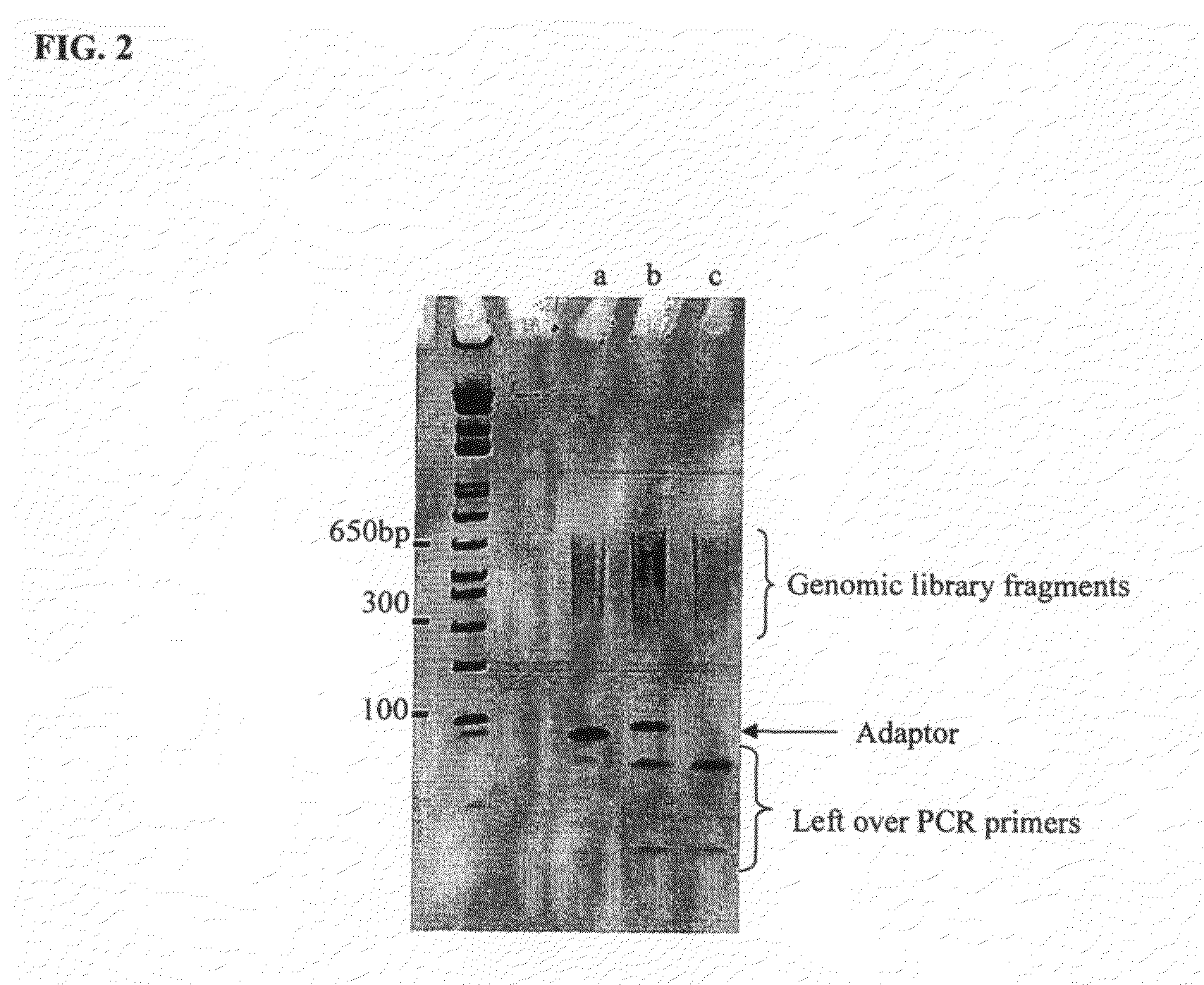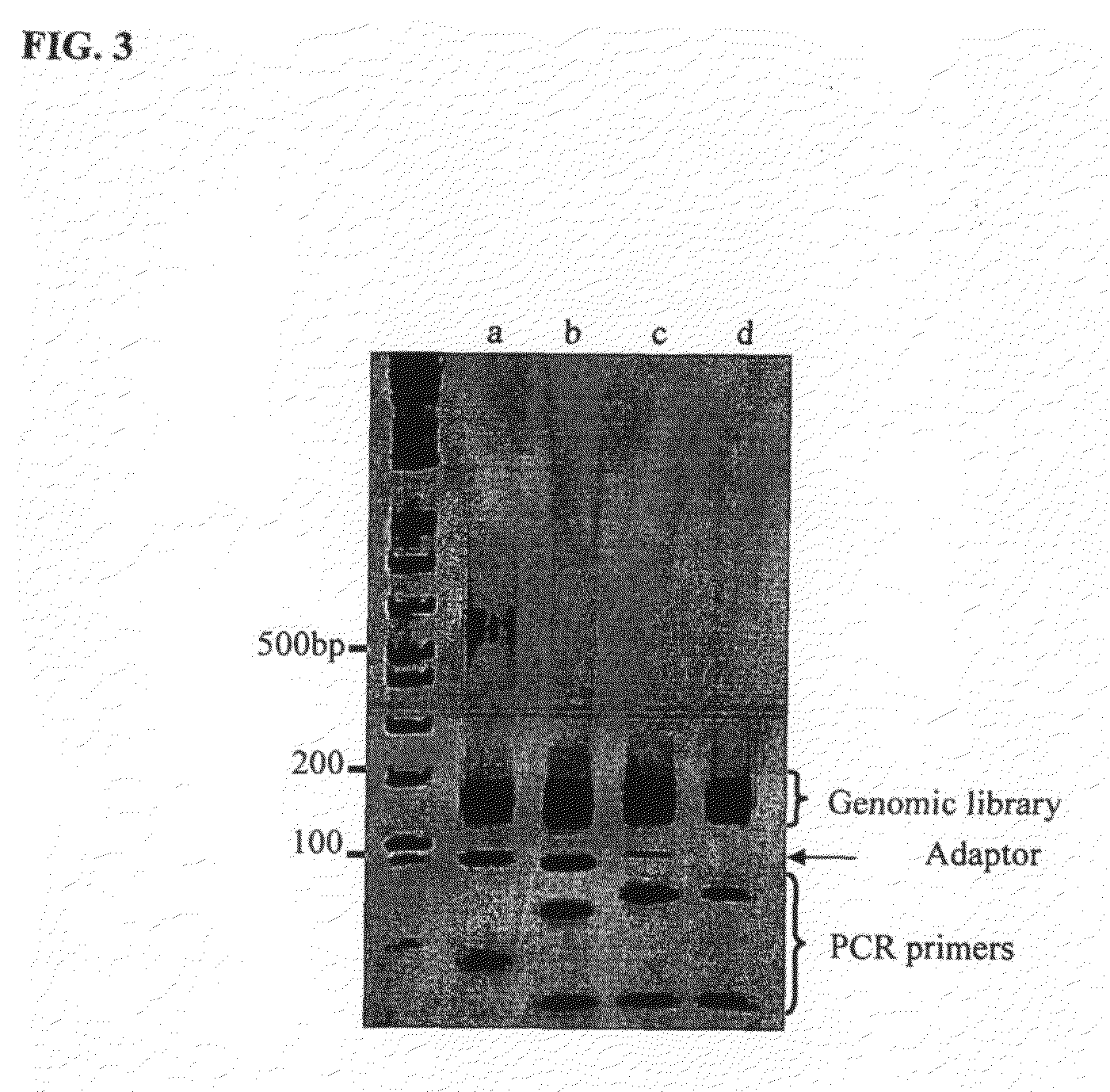Method of library preparation avoiding the formation of adaptor dimers
a library and polynucleotide technology, applied in the field of library preparation, can solve the problems of forming adaptor dimers, increasing the complexity and cost of pcr amplification of generating a plurality of primer pairs for each individual template is not a viable option for complex mixtures of templates
- Summary
- Abstract
- Description
- Claims
- Application Information
AI Technical Summary
Benefits of technology
Problems solved by technology
Method used
Image
Examples
example 1
[0116]The DNA source used was a purified 10 kb region of Human BAC. The DNA was first prepared for ligation to forked adaptors by: fragmentation of the DNA by nebulisation, end repair of the DNA ends to make them blunt-ended and phosphorylation, then the addition of a single ‘A’ nucleotide onto the 3′ ends of the DNA fragments. The ligation reaction was performed with the prepared fragmented DNA and adaptors pre-formed by annealing ‘Oligo A’ and ‘Oligo B’ (sequences given below). The product of the reaction was isolated / purified from unligated adaptor by gel electrophoresis. Finally, the product of the ligation reaction was subjected to cycles of PCR to selectively amplify ligated product that contained genomic DNA with adaptor at both ends of the fragments.
Materials and Methods
DNA Sample Preparation
[0117]Amplified 10 kb region of human BAC DNA (140K human chromosome 6 insert in a pTARBAC vector) using two 5′ phosphorylated primers (LRPCR primer 1: 5′Phosphate TGGAACAGCCGCTCTCACCT S...
example 2
[0152]The DNA source used was a purified 10 kb region of Human BAC. The DNA was first prepared for ligation to forked adaptors by: fragmentation of the DNA by nebulisation, end repair of the DNA ends to make them blunt-ended and phosphorylation, then the addition of a single ‘A’ nucleotide onto the 3′ ends of the DNA fragments. The ligation reaction was performed with the prepared fragmented DNA and adaptors pre-formed by annealing ‘Oligo A’ and ‘Oligo B’ (sequences given below). The product of the reaction was isolated / purified from unligated adaptor by gel electrophoresis. Finally, the product of the ligation reaction was subjected to cycles of PCR to selectively amplify ligated product that contained genomic DNA with adaptor at both ends of the fragments.
Materials and Methods
DNA Sample Preparation
[0153]Amplified 10 kb region of human BAC DNA (140K human chromosome 6 insert in a pTARBAC vector) using two primers (LRPCR primer 3: CGAGGAACTCAGCACTCATC SEQ ID NO:12 and LRPCR primer 4...
PUM
| Property | Measurement | Unit |
|---|---|---|
| Temperature | aaaaa | aaaaa |
| Volume | aaaaa | aaaaa |
| Volume | aaaaa | aaaaa |
Abstract
Description
Claims
Application Information
 Login to View More
Login to View More - R&D
- Intellectual Property
- Life Sciences
- Materials
- Tech Scout
- Unparalleled Data Quality
- Higher Quality Content
- 60% Fewer Hallucinations
Browse by: Latest US Patents, China's latest patents, Technical Efficacy Thesaurus, Application Domain, Technology Topic, Popular Technical Reports.
© 2025 PatSnap. All rights reserved.Legal|Privacy policy|Modern Slavery Act Transparency Statement|Sitemap|About US| Contact US: help@patsnap.com



